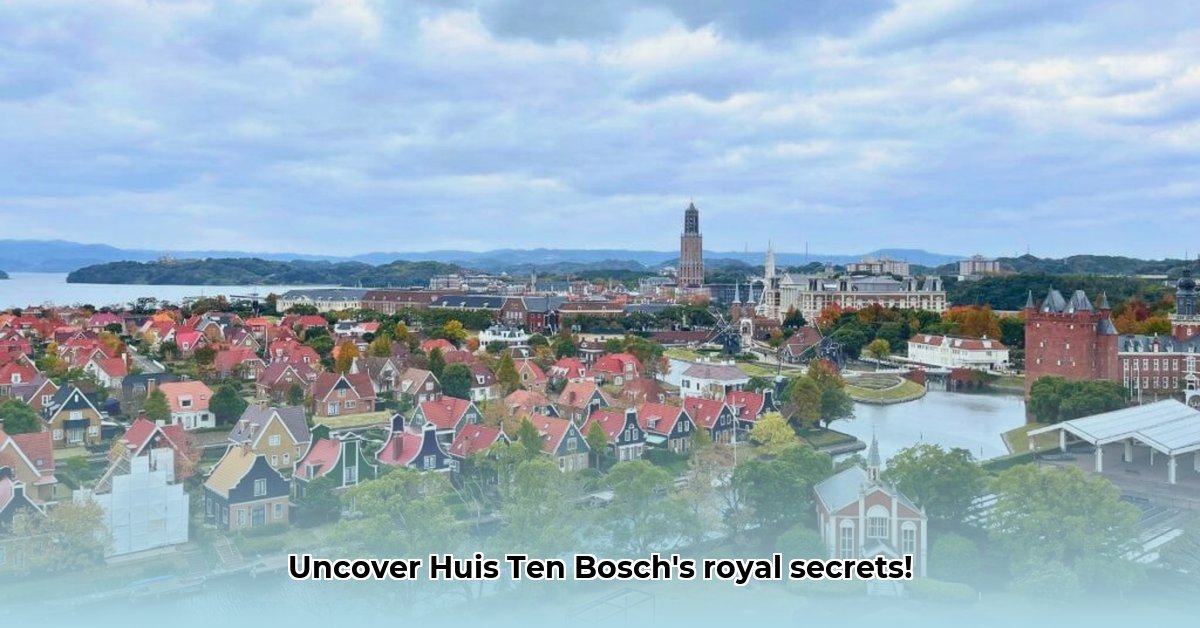
Waar Ligt Huis Ten Bosch? A Royal Residence Unveiled
Ever wondered about the Dutch Royal Family's stunning home, Huis ten Bosch? More than just a building, it's a captivating story spanning centuries, a true testament to Dutch resilience and national pride. This isn't just about finding its location; it's about uncovering its fascinating past, from its humble beginnings to its role as a symbol of modern Netherlands. So, waar ligt Huis ten Bosch? Nestled in the heart of The Hague, it’s a must-see for anyone fascinated by history and regal architecture.
The Birth of a Palace: 17th-Century Grandeur
Construction began in 1645, not as a royal palace, but as a grand private residence. Renowned architects Jacob van Campen and Pieter Post, masters of their time, designed this masterpiece. Their vision, a blend of classical and Dutch architectural styles, laid the foundation for what would become a cornerstone of Dutch history. The initial purpose, though private, foreshadowed a far grander destiny. Can you imagine the sheer scale of this undertaking, the meticulous craftsmanship required?
Centuries of Change: Expansions and Adaptations
Over the centuries, Huis ten Bosch evolved, reflecting the changing tastes and needs of the monarchy. Each era left its mark – Baroque flourishes here, Neoclassical enhancements there. The palace expanded; its design changed, yet its inherent grandeur remained intact. Each alteration tells a story, a snapshot of Dutch society at a particular moment. This continuous evolution truly makes it a living testament to Dutch history, doesn't it? Think of the royal weddings, state banquets and diplomatic negotiations held within its walls — each event adding another layer to its rich history.
War's Scars and a Path to Renewal: WWII and Beyond
World War II inflicted significant damage, testing the resilience of both the palace and the Dutch people. The subsequent reconstruction, a monumental task, highlights the nation's unwavering commitment to preserving its heritage. This period of rebuilding wasn't merely about restoring bricks and mortar; it was about restoring a symbol of Dutch national identity. The scars of war remain a stark reminder of the past, yet the palace's restoration stands as a beacon of hope and perseverance.
A Modern Touch: Recent Renovations and Sustainability
The €63 million renovation, completed in 2019, wasn't just about aesthetics; it was about integrating sustainability. This project demonstrated a forward-thinking approach, blending modern eco-consciousness with historical preservation. The palace now stands as a beacon of sustainable architectural practices, efficiently combining modern technology with historical integrity. This successful merging of the old and the new showcases a progressive attitude toward environmental responsibility. The subsequent hosting of a NATO summit dinner highlighted its ongoing international importance.
Huis ten Bosch Today: A Symbol of National Pride
Today, Huis ten Bosch serves as the primary residence of the Dutch Royal Family, a powerful symbol of Dutch national identity. It's more than just a building—it embodies the nation's history, resilience, and its progressive vision for the future. The palace's continued use for significant national and international events underscores its crucial role within Dutch society. It’s a testament to the enduring power of history, seamlessly blending the past with the present.
This remarkable story perfectly answers the question, "Waar ligt Huis ten Bosch?", demonstrating it's a place of immense historical significance, a captivating blend of past and present, and a lasting symbol. The intricate journey of Huis ten Bosch reminds us that history is not just in textbooks; it is in the very stones that surround us.